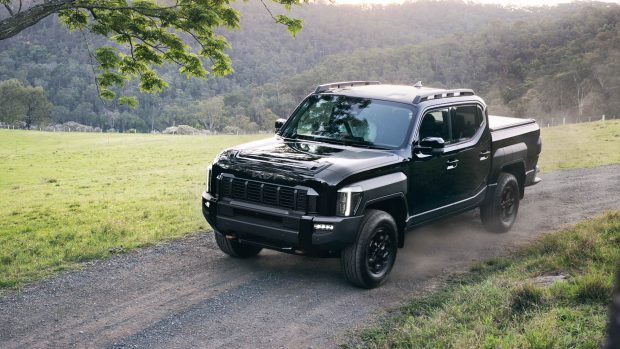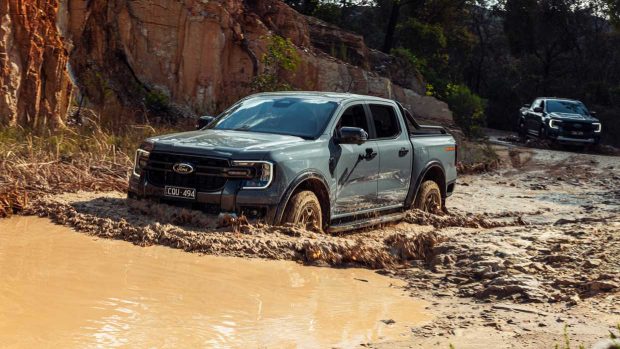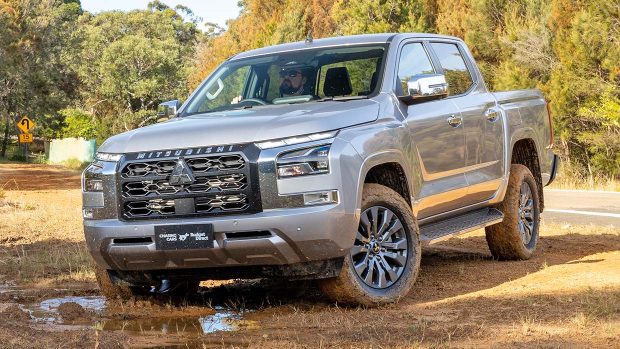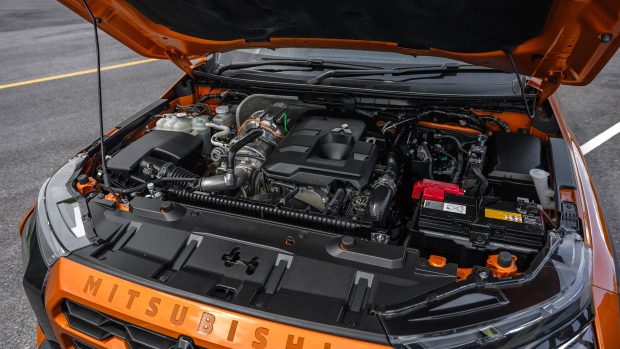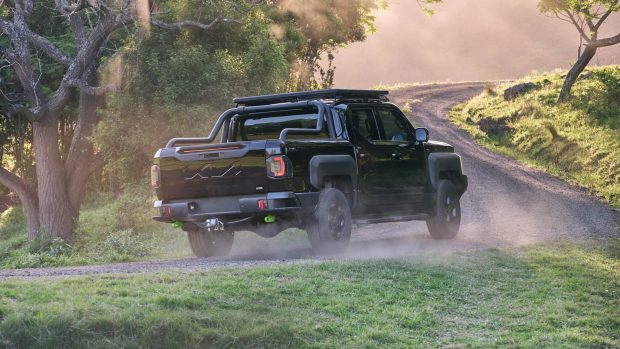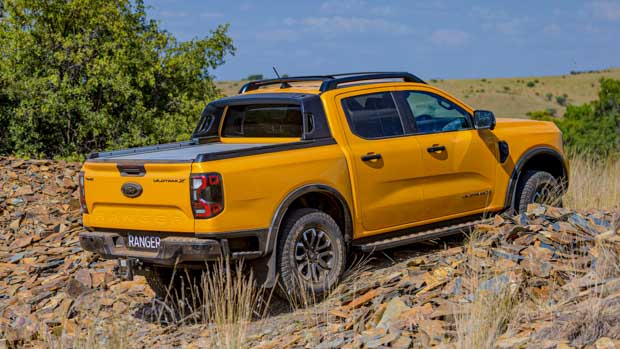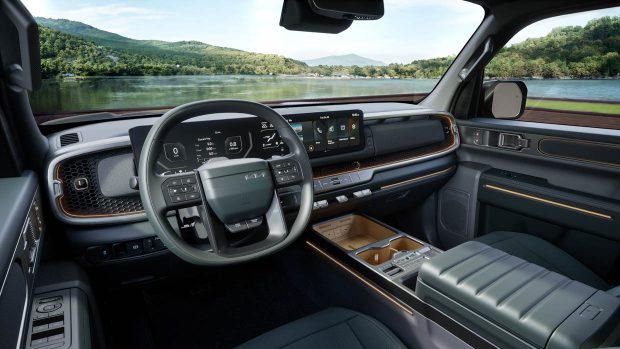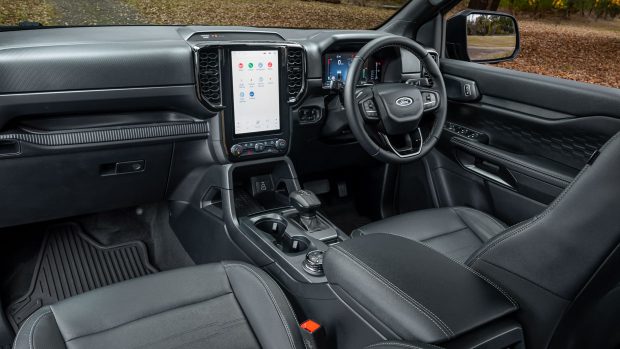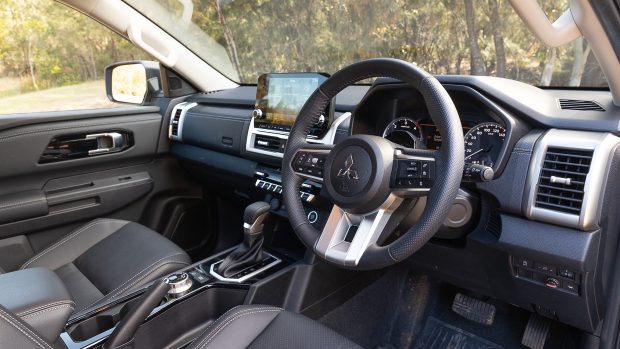-
Car Reviews
- Car News
-
Car Comparisons
Latest comparisons
- Chasing Deals
The Kia Tasman is the new kid on the block in ute town, but how does it compare to some of the biggest dual-cab rivals in Australia?
Kia Australia’s highly-anticipated Tasman ute has just been unveiled and it’s treading in the toes of some of the most iconic and popular utility vehicles in Australia: the Ford Ranger, the Toyota Hilux and the Mitsubishi Triton.
But how does the new Tasman stack up, at least on paper? Well, let’s find out!
While many utes sold in Australia have almost too many variants, the Kia Tasman will launch in three trims: Baseline, X-Line and X-Pro. The Baseline can be had with rear-wheel drive, but also four-wheel drive. X-Line and X-Pro variants feature switchable four-wheel drive.
Pricing is yet to be confirmed for the Kia Tasman in Australia.
The Ford Ranger meanwhile, can be had in either 4×2 or 4×4 and comprises variants XL, XLS, XLT, Sport, Wildtrak, Platinum and Raptor at the very top end. Pricing ranges from $36,880 to as much as $90,440, both figures before on-road costs.
The Mitsubishi Triton is also available in 4×2 or 4×4 guise and currently has a range which includes GLX, GLX+, GLX-R, GLS and GSR. Prices range from $30,740 to as much as $63,840 before on-road costs for the highest-spec GSR variant.
Kia is therefore coming into the market with a much smaller variant lineup, but that’s not necessarily a bad thing.
Kia’s new Tasman will be powered by a 2.2-litre turbo-diesel four-cylinder engine, a similar one to what is found in the Kia Carnival. In this ute guise, the engine produces 154kW of power and 441Nm of torque. The Tasman will use an eight-speed automatic and won’t be offered in Australia at this point in time with a manual transmission option.
The Ford Ranger is available with several different engine options, including a 2.0-litre twin-turbo diesel four-cylinder engine with outputs of 154kW/500Nm, or in upper variants, a 3.0-litre turbo-diesel V6 engine with 184kW/600Nm. Both can be paired with a 10-speed automatic transmission.
Meanwhile, the new-gen Mitsubishi Triton utilises a single choice of engine, a 2.4-litre twin-turbo diesel four-cylinder engine that produces 150kW/470Nm and is paired with a six-speed automatic transmission.
While the Tasman can’t quite meet the lofty power heights of the Ford/Volkswagen 3.0-litre turbo-diesel V6, or the torque of a new-gen Triton, it’s still well on its way to be suitable for a wide range of Australian buyers.
Like many utes available in Australia, Kia’s upcoming Tasman ute has switchable four-wheel drive, as well as up to 252mm of ride height. No breakover or departure angles have been revealed for the ute at this early stage.
Several terrain modes will feature as standard, including for Snow/Mud/Sand/Rock. An impressive wading depth of 800mm features for the Tasman which matches the mighty Ford Ranger.
Kia has confirmed that the Tasman ute will meet the ‘Aussie-ute-standard’ 3500kg braked towing capacity and a payload of up to 1195kg, at least for the rear-wheel-drive version.
The current T6.2 Ford Ranger uses either a part-time or full-time four-wheel drive system, and, like the Tasman, allows the driver the ability to switch between drive modes. Ground clearance for the Ranger in Wildtrak guise is 234mm. As noted above, the Ranger has identical wading depth to the Tasman, rated at an impressive 800mm.
Towing capacity for the Ranger is 3500kg braked for most of the range, with maximum payload up to 1150kg on some variants.
Lastly, the Mitsubishi Triton ute uses a Super Select II four-wheel-drive system on its top models and also includes terrain modes, a lockable rear differential and active yaw control. It has 228mm of ground clearance and a rated wading depth of just 500mm.
As for the Triton’s towing capacity, the ute is rated at 3500kg braked and can have a maximum payload of up to 1095kg (depending on variant chosen).
While some information is still under wraps, the Kia Tasman has been confirmed to get the following features as standard:
Meanwhile, a comparable mid-spec Ford Ranger XLT includes:
And the Mitsubishi Triton GLS includes as standard:
While it’s very early days for the Kia Tasman, its screens alone could be a winning formula over some of its toughest competitors.
Although it’s only a very quick look on paper, the Kia Tasman certainly offers a lot on the spec sheet. While its outputs are down slightly compared to key rivals, it still has class-matching towing and payload capabilities and enough interior tech to keep most people occupied.
We’ll have to wait and see what it’s like to drive, so stay tuned to Chasing Cars for more reviews, news and videos to come very soon!
Latest news
About Chasing cars
Chasing Cars reviews are 100% independent.
Because we are powered by Budget Direct Insurance, we don’t receive advertising or sales revenue from car manufacturers.
We’re truly independent – giving you Australia’s best car reviews.
